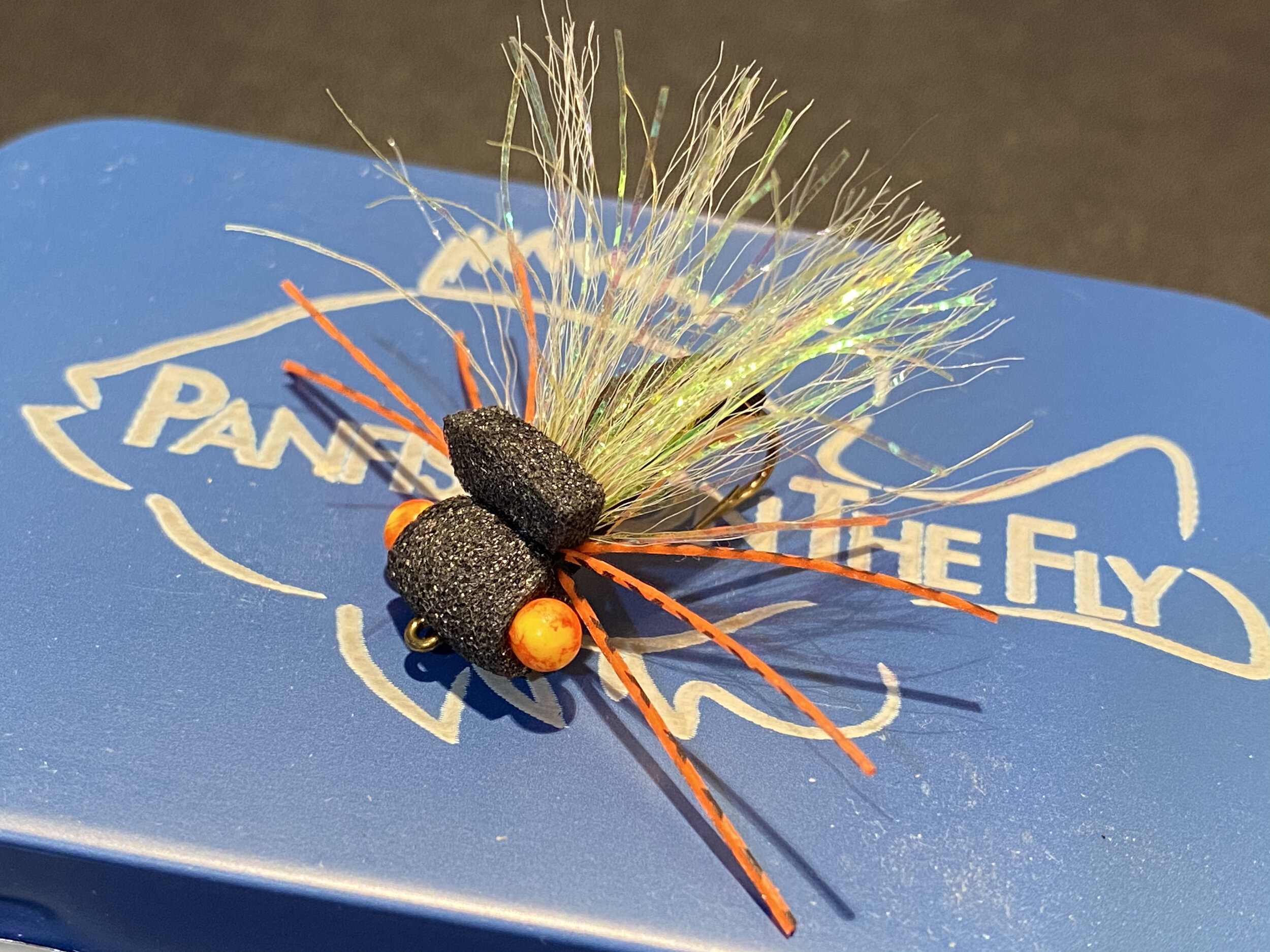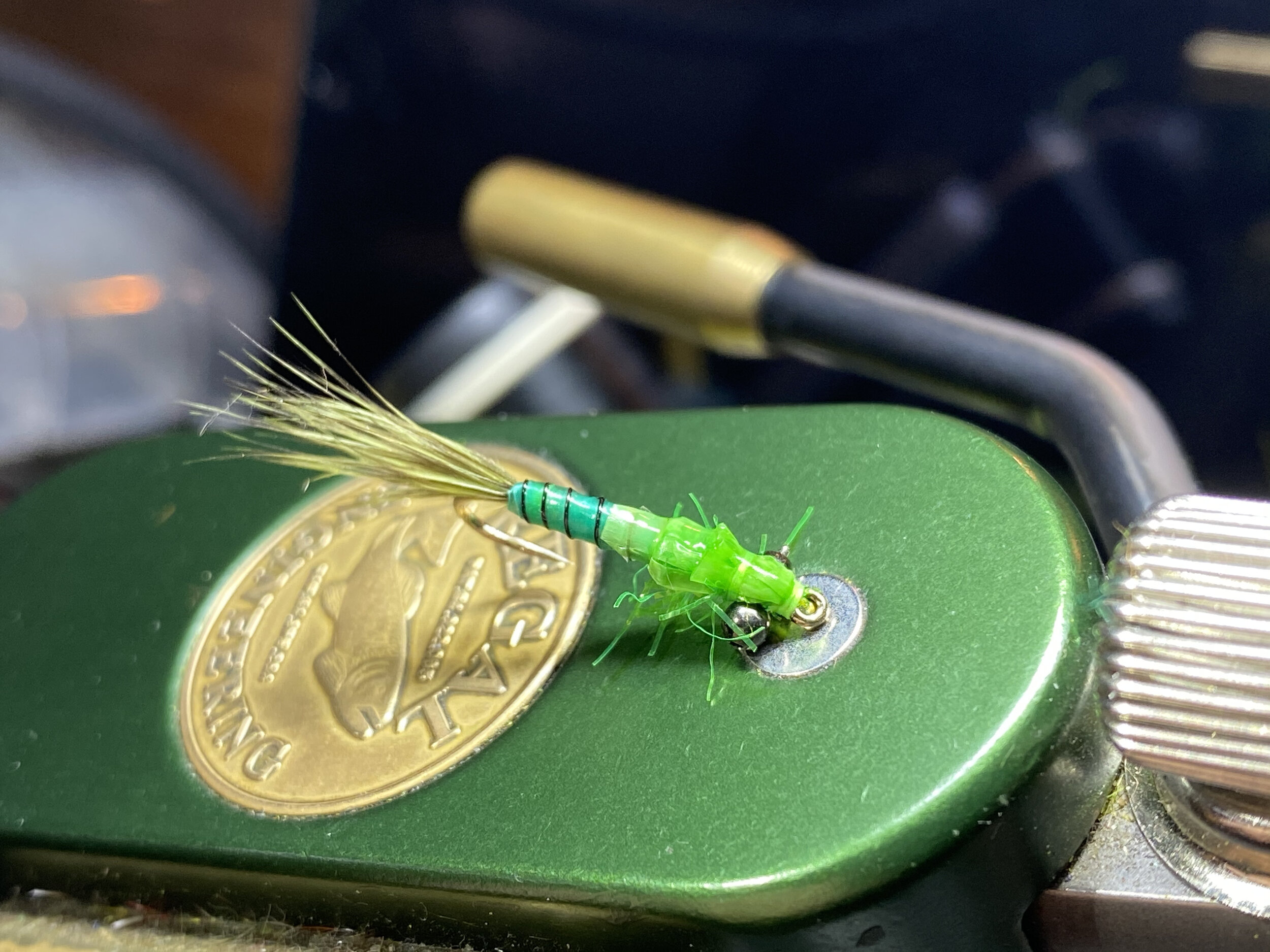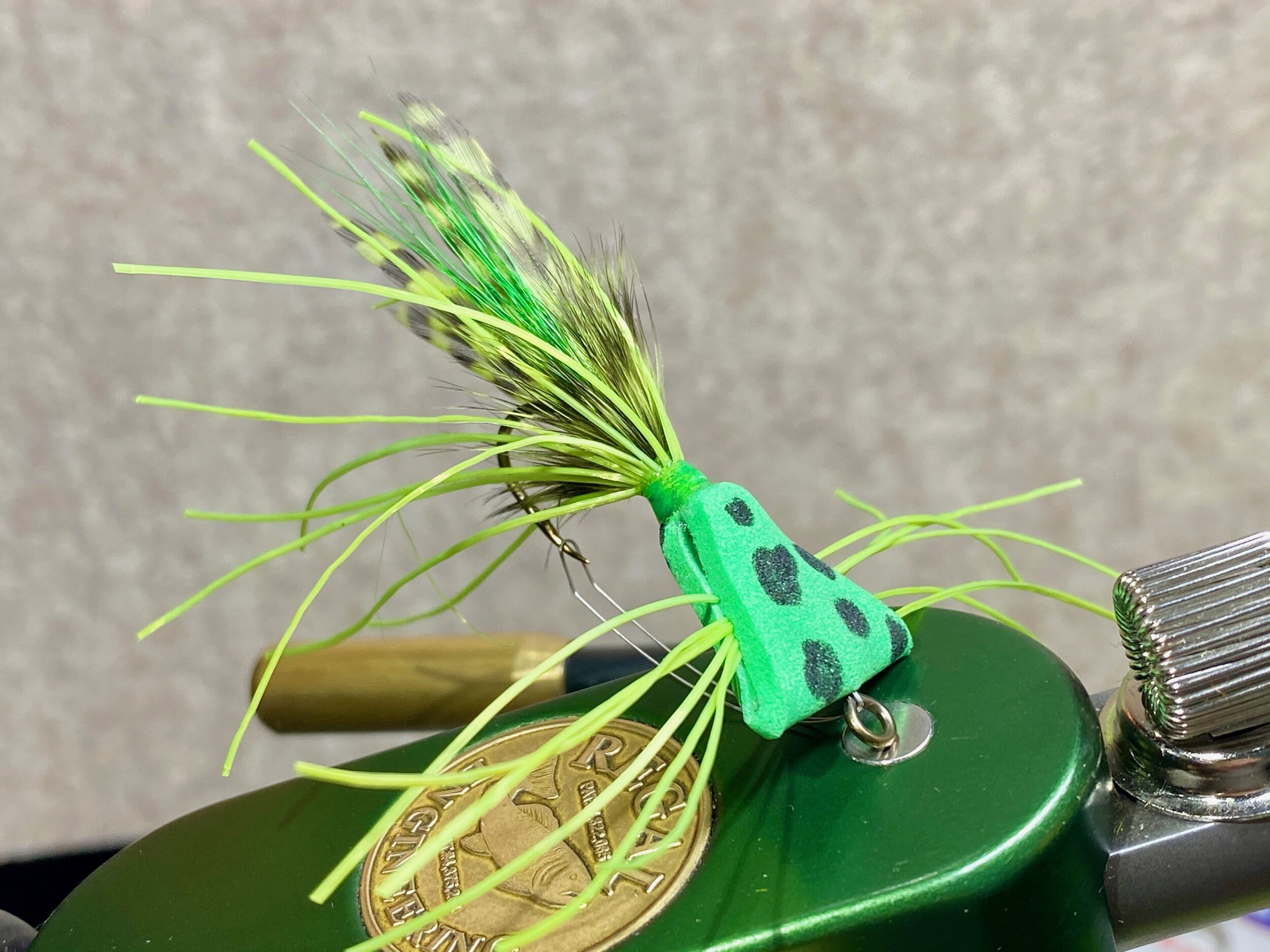If you are a fly fisher, the Brood X Cicada should have crossed your radar by now. The Brood X bug is one of the largest and most widely distributed groups of periodical cicadas. They are scheduled to emerge this spring after spending 17 years underground.
Read moreFly Tying Friday: The Wee Frog
The Wee Frog is a tiny size 12 frog pattern that big panfish can’t resist.
Everyone knows a bass or a pickerel has a hard time ignoring a properly presented frog pattern, but panfish? You can make the argument that most adult frogs are too big of a prey item to be eaten by most panfish. However, there are smaller species of frogs whose habitats mix with that of panfish.
Read moreFly Tying Friday -The Micro Gurgler
The Micro Gurgler, is a buggy looking, easy to tie Gurgler style fly that is a panfish killer.
Topwater fishing has been on my mind of late. We have had a smattering of warm spring days here in the northeast but not a long enough string of them to significantly warm the water. We are in the midst of another cold front which tends to shut down fishing for a few days. The warmer weather is right around the corner, and it will bring the return of consistent, quality topwater fishing. Nothing beats a bluegill or any other fish, for that matter, taking flies off the surface.
Read moreFly Tying Friday - The Easter Basket Damselfly Nymph
The Easter Basket Damselfly Nymph is a damselfly with a little bling!
Damselfly nymphs are probably my favorite warm water nymph patterns. Damselflies are found everywhere (at least in my neck of the woods), and many fish species relish them. I typically use damselfly nymph patterns in natural hues of olive, green, tan, and brown. However, during certain times of the year, my local panfish and bass seem to key in on brightly colored flies. For those occasions, I thought a bright damsel nymph would be just the ticket.
Read moreFly Tying Friday - Triangle Bugs For Bass
A fully dressed, weedless bass-sized Triangle Bug. This pattern makes a good disturbance on the surface of the water and is a solid bass producer.
For a long time, I have touted the Triangle Bugs' effectiveness as a topwater panfish fly. Over the years, I have caught a variety of fish species on this little bug while fishing for panfish. This list included many largemouth bass, including one six-pound fish that sipped that tiny size eight fly from the surface like a trout taking a mayfly. So it was a logical decision to tie these bugs a little larger and target bass with them.
Read more



